The South West Fly Fair returns this Spring and is a must go to fixture in the West Country Fly Anglers Calendar.

The South West Fly Fair returns this Spring and is a must go to fixture in the West Country Fly Anglers Calendar.


Watching the news this morning took me back to a wonderful time in the early eighties when for seven days we would wander the North Devon coast in search of specimen fish. The Ilfracombe & District Angling Association organised a popular angling festival each summer that was well attended by both locals and visiting anglers. The ignition for these memories was sparked by the mention on BBC news of one of North Devon’s famous rock marks.
Back then as we competed against each other to catch the biggest fish and successful marks could be a closely guarded secret with some going to extreme lengths to discover these marks. Spotting a known anglers car parked adjacent to a coastal access point was a common giveaway or a quick glance through the window would give a clue if it was an angler’s car with associated fishing bits a giveaway. Back then all cars also displayed a tax disc giving a clue as to the angler’s residential area.
This was of course long before the days of social media where anglers post their catches and often try to disguise marks using clever photo shop techniques. Not sure if there are more or less anglers these days but there are probably less fish. Coastal access has however become an increasingly problematic area. The increase in coastal walkers and those using the coast for recreation has undoubtedly increased considerably and this has in some cases impacted upon free access.

The introduction of fishing permits to gain access has been an unwelcome trend generated in part by a lack of respect for private land and the ongoing issue of litter.
Coastal erosion is also playing its part with once popular marks like Sillery Sands now inaccessible due to landslips.
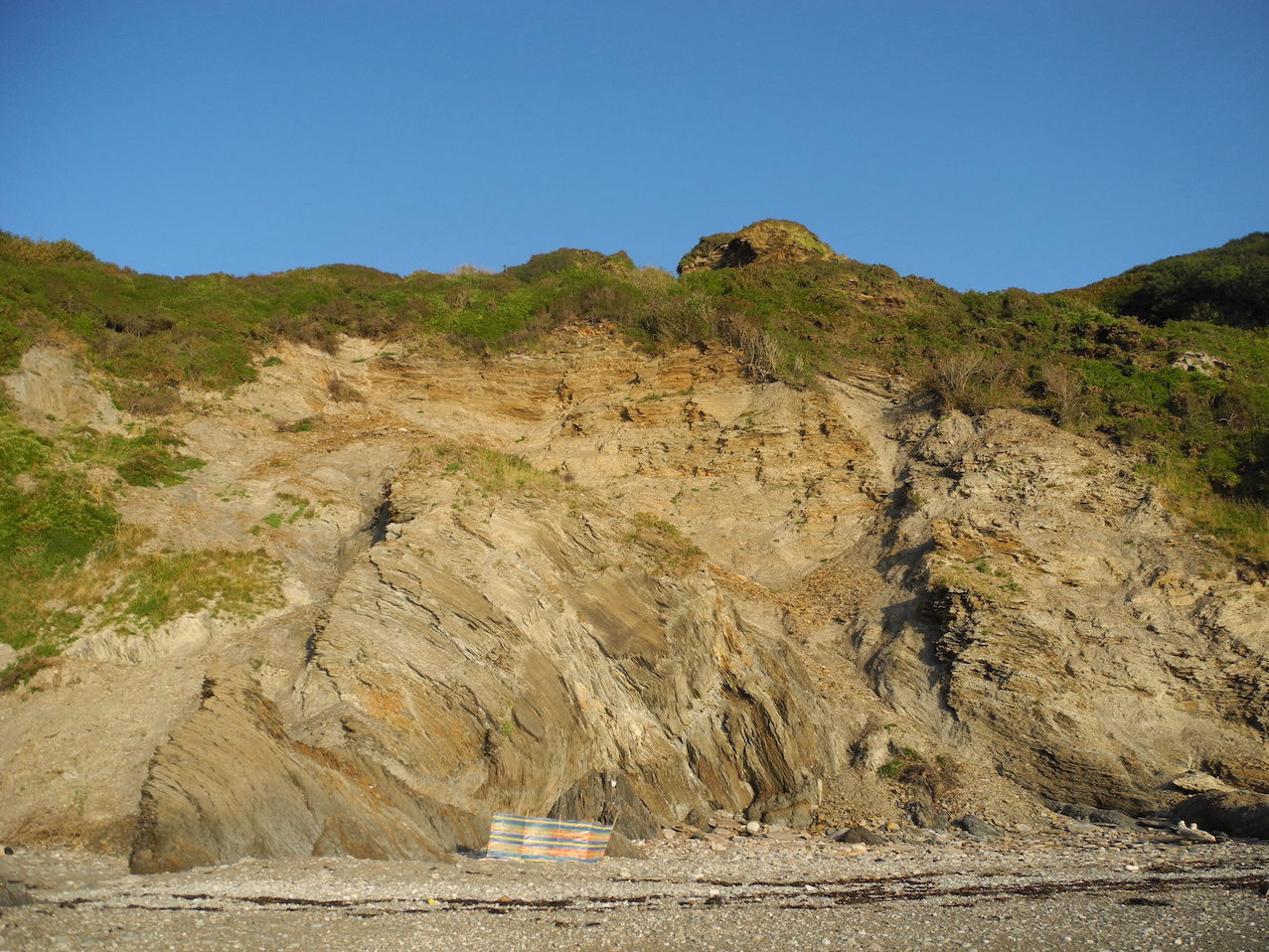
In truth there are still many miles of accessible coastline that allow free access even if a long walk is required. A day walking the coast can reveal potential marks as can a survey of Google Maps often revealing areas worth exploring.
Those chasing specimen fish often follow the crowd trying to catch the fish that were caught yesterday. Whilst being at the right place at the right time is paramount there are plenty of fish in the sea! Many marks have become popular due to the reporting of good fish a major factor for the more people who fish a mark the more will be caught. Perpetuating the myth that it is the must visit mark.

I fully understand the reason for being careful with informing others of where fish are caught. We all like to have our favourite marks to ourselves but in many cases with a bit of thought it’s not hard to get away from the crowds.

Like most things in life many will always follow the crowd. Back in those days fishing the North Devon Coast during the Ilfracombe Festival I fondly remember the smirks as the competition organisers voice echoed across the harbour. Today’s winner is “ Bullshit Bov , with a fine specimen wrasse of 6lb from “ Fraggle Rock”.
Fraggle rock a popular childrens TV programme has been relaunched. It ran from 1983 until 1987.

The trees were stark and dark looming out of the mist as night gave way to day. The line was punched out and allowed to settle the lures sinking slowly in the clear water. I began the retrieve attempting to impart life into the two flies. The cool water stung the fingers as I settled into the rhythm of fly fishing for Stillwater trout.

After five minutes the line drew tight with an electrifying tug and for a magical moment there was life on the line. It was short lived however the hooks failing to find a grip.
This brought the essential ingredient of anticipation to the hunt for a trout. The following fifteen minutes or so resulted in several missed takes but no actual hook ups.
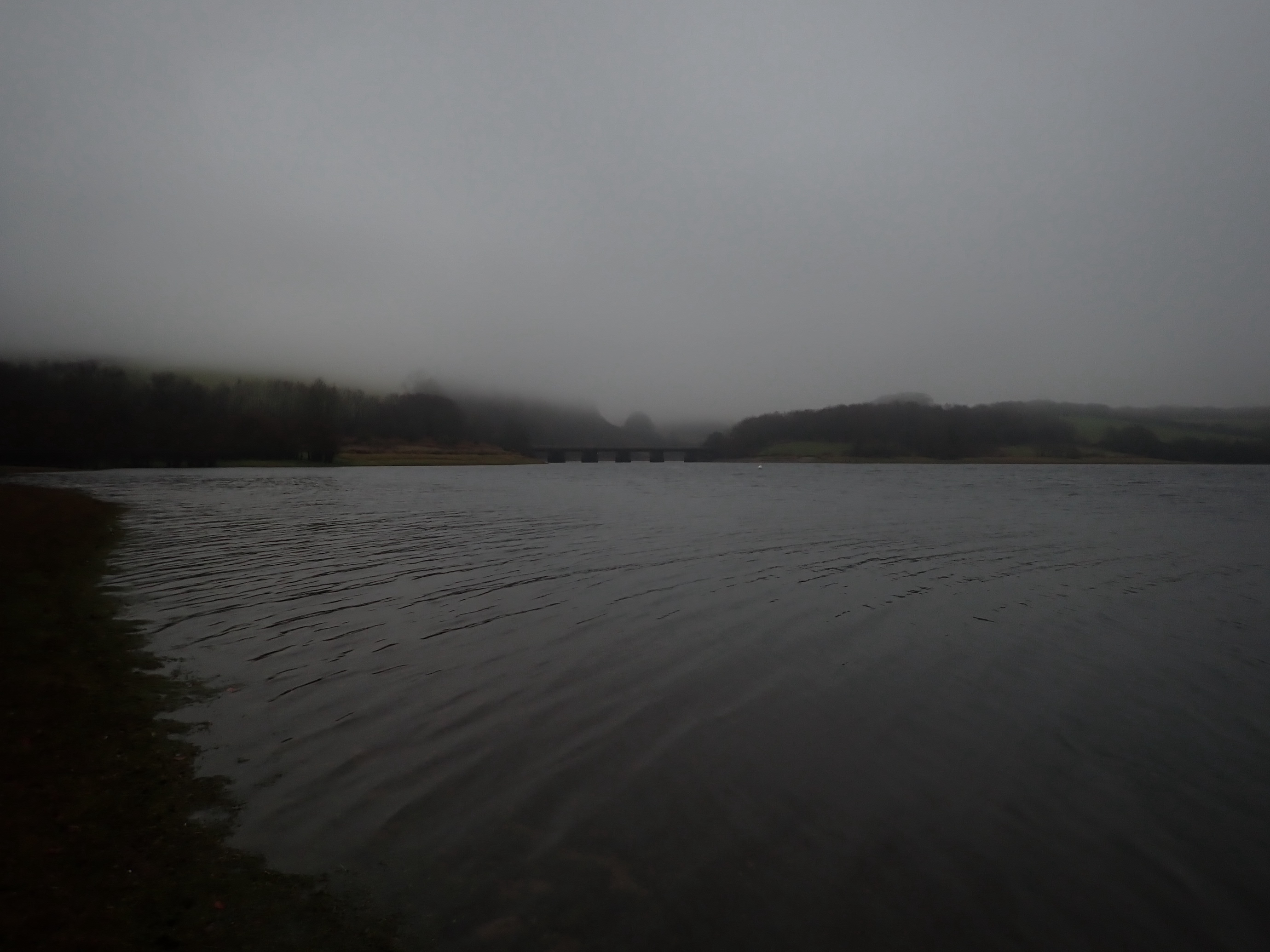
I became immersed in the search relishing the cool fresh air, the ever changing light on the water and glimpses of birds upon the lake. Cool rain was driven by the Southwest wind but I hardly noticed as I focussed on the line as it entered the water expectant of that connection with life beneath in an unseen dimension.
After a quiet half an hour I moved fifty yards along the bank and restarted my quest. The line drew tight and life once again pulsed at the end of the line. After a pleasing tussle a handsome brown trout of close to 2lb was brought to the net and admired briefly before being slipped back to disappear with a flick of its tail. Another brown trout equally handsome followed a couple of casts later; half the size of the first.

After an hour without further success the nagging doubts began to set in prompting a move. Once again I cast out into the lake ever expectant. I watched anglers on the far bank and wondered how they were faring? I changed flies, small lures, large lures, small imitative patterns, slow retrieve, fast retrieve, erratic, smooth, deeper and shallower. This is the fascination of fly fishing on a large wind swept Stillwater. Whilst the trout are stocked the fishing has a feeling of wildness that is not experienced in the smaller commercial trout fisheries.

Location is of course vital in the search for success and after three hours without a winter rainbow I decided to move to the far bank. I walked back to the van, broke down the rod; loaded the gear and drove to the next car park.
A hot coffee from the flask and I set off to fish a new area with renewed optimism. I waded out and punched the line out across the lake. A stiff breeze was blowing and the water felt cool as I stood waist deep. It was now early afternoon and I sensed that the best of day had passed. Suddenly the line zipped tight and the rod hooped over as a hard fighting rainbow threw itself into the air. It was a relief to get a rainbow on the bank a pristine fish of a couple of pounds.
I fished on with renewed expectation and was soon rewarded as a heavy pull resulted in connection with a super fit rainbow that took the line almost to the backing. The rod was hooped over as I relished the moments as the fish shook its head on a tight line making repeated powerful runs. After several tense minutes the rainbow was coaxed over the waiting net. Four and a half pounds of fin perfect perfection was given the last rites and laid to rest beside the other rainbow.
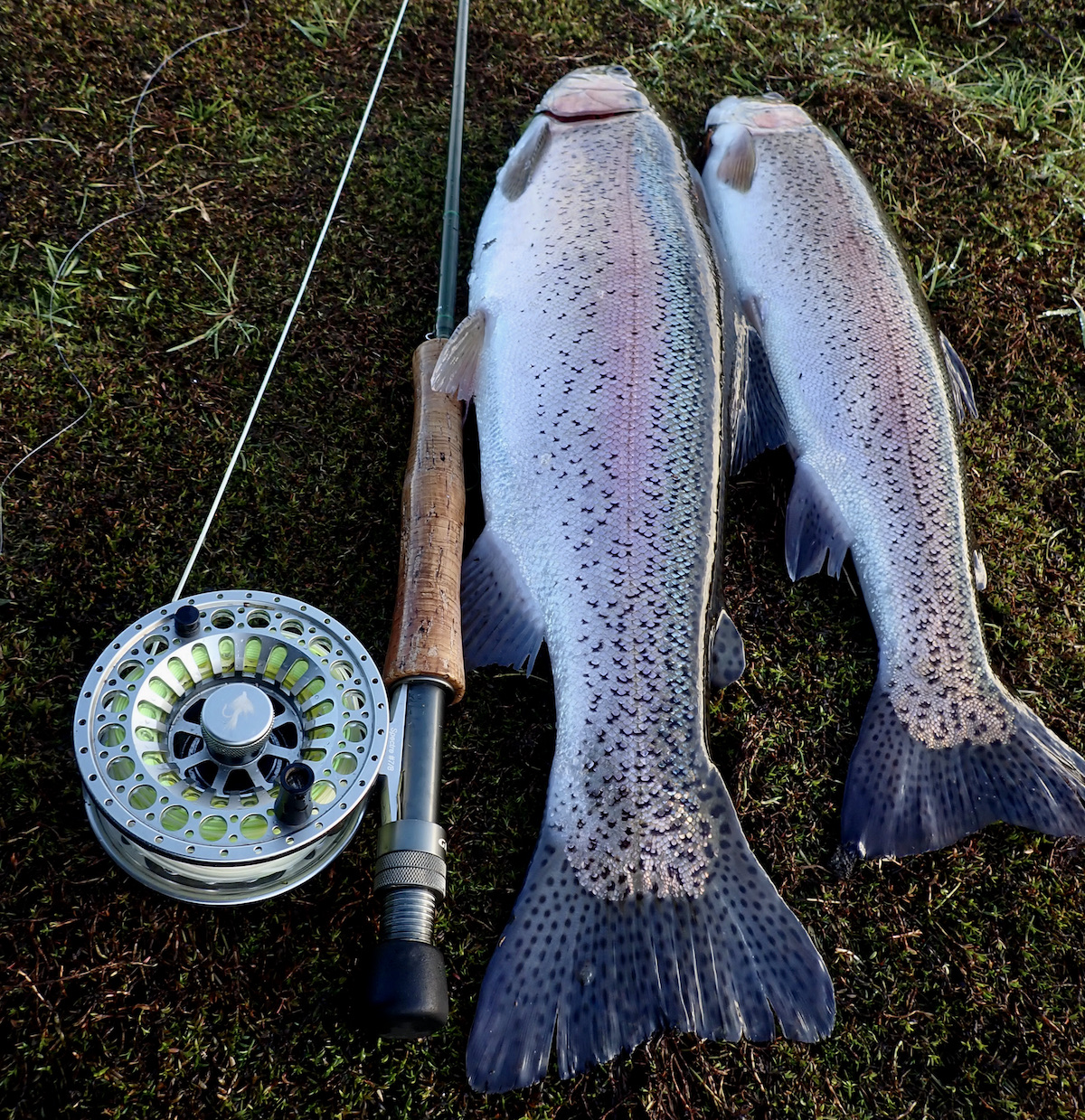
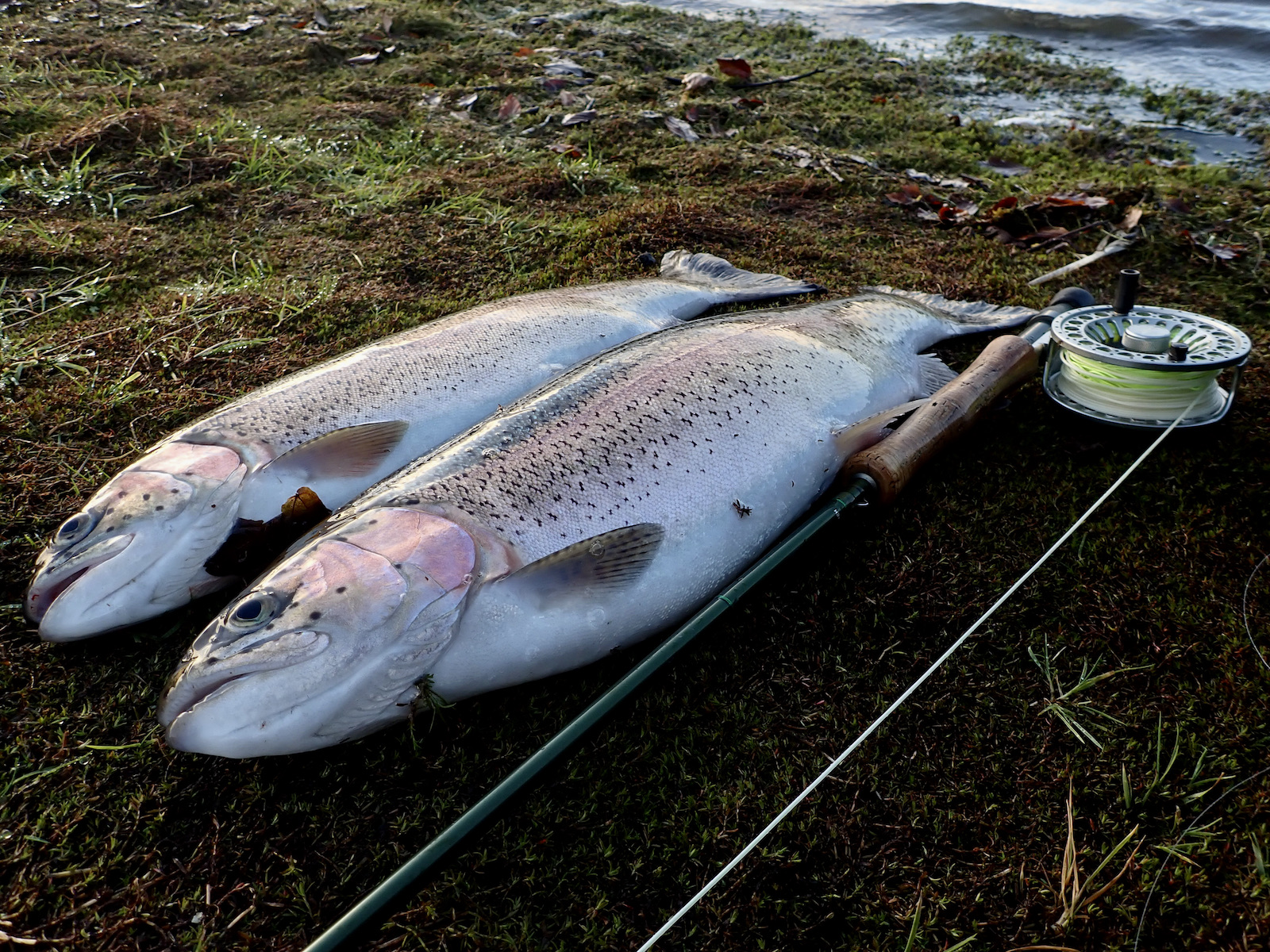
The winter sun eventually broke through illuminating the landscape. Shots from a nearby shoot drifted across the lake. I fished on content with success and was delighted when once again the line drew tight and a third prime conditioned rainbow was brought to the net after another exciting tussle.



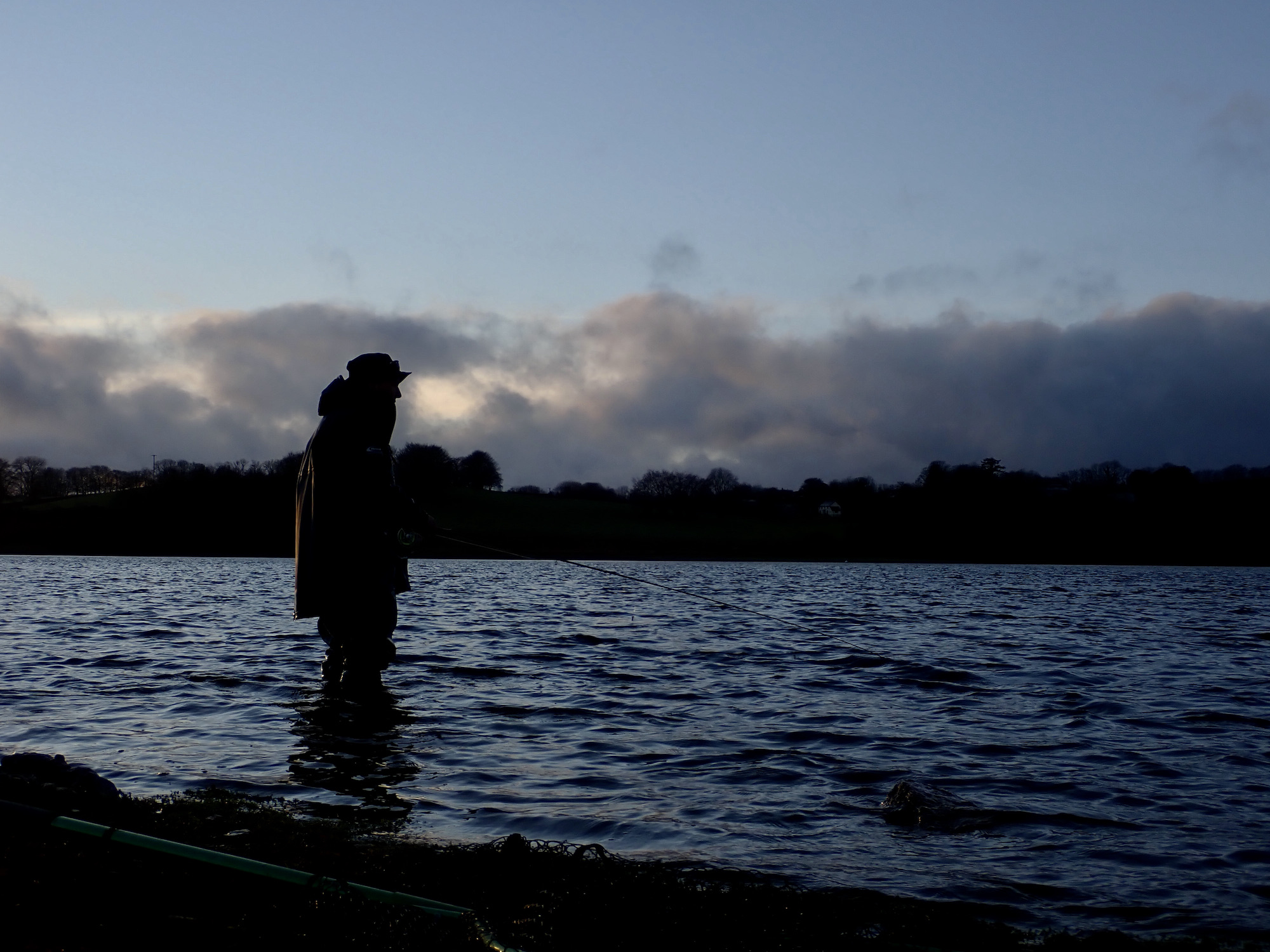
The sun was now sinking closer to the hill tops and I decided to head for home after an exciting and rewarding days fishing. Wimbleball remains open until New Year’s Eve and is well worth a visit. I look forward to returning at the end of February at the start of a new season. Many thanks must go to Mark and Trudi Underhill for providing what is undoubtedly the jewel in the crown of South West trout fishing. Its not always easy but those rainbows are true piscatorial perfection!


The Winter solstice, the shortest day of the year so with time limited and Christmas looming I decided on a short session at Bulldog Fishery in search of a winter trout. With a cold Easterly wind blowing this sheltered water was an ideal venue to grab a couple of hours sport.
I arrived close to 10:00am and was given a cheery welcome from fishery owner Nigel Early who was busy preparing Christmas turkeys.

The lake was crystal clear with very little weed growth remaining. I set up and took a wander around the lake glimpsing the occasional rainbow but none of the double figure browns or rainbows that have been recently stocked. I had tied on a small bead headed pheasant tail nymph and cast this to the middle of the lake where a few trout could be seen cruising high in the water. The first couple of casts resulted in missed takes.
The inlet area is often well worth a try and the sight of large trout rolling in the turbulent inlet water prompted a move to the far bank where I could cast my fly into the flow.

The line sailed out the small nymph dropping past the flowing water. I tightened the floating line and watched the tip intently. The line twitched and I lifted the rod connecting with a hard fighting rainbow of around 6lb.


A large trout repeatedly swirled within my casting zone and I wondered if it was one of the lakes big browns? I persisted with the small nymph adding a couple more trout to the bag each full tailed rainbow in the 3lb to 4lb range.

The water was crystal clear yet the light was wrong to get a really good look into the water. The occasional good sized trout drifted into view but takes eased off a little. I experimented with a wet daddy longlegs to no avail then switched to the tried and trusted damsel nymph.
First cast a large rainbow followed the lure before turning away after following for a couple of feet. Next cast the line drew tight and the rod bent over in a satisfying curve as a large trout shook its head in an effort to shake the hook free. The flanks of a large brown trout flashed in the clear water and a tense tussle ensued before the fish was safely in the net. I admired its boldly patterned flanks and slipped the hook from its jaws. The brown trout looked to be about 7lb a very pleasing result to celebrate the turning of the year. I held the fish for a moment in the cool water until with a kick of the tail the prize was once again within a different dimension beneath the cold surface of the winter lake.

I fished on for a while changing back to the pheasant’s tail nymph to take a last rainbow before heading for home in time for an early lunch.


Berkley Side Wire Cutters
“Pike anglers are strongly advised by the Pike Anglers Club to always carry a strong pair of side cutters in case there is a need to cut through hooks to aid unhooking.” These Berkley Side wire cutters are ideally suited to this purpose and a wide range of other uses for the sea angler and lure angler.

They are excellent tools for snipping off those old rusty hooks on lures prior to replacing them.

It is also a good idea to carry a pair of side cutters for use in an emergency. I once had a large hook penetrate a finger whilst in Egypt fishing for Nile perch and was forced to have the hook cut free to remove it from my finger. Many hours away from hospital I dread to think how we could have proceeded without a pair of side-cutters.
Heavy duty wire traces used in sea angling need top quality side cutters for cutting traces to length when making traces and for the occasional instance when a hook is too deep to remove from a fish.
The Berkley side cutters have carbon steel jaws, Corrosion Resistant Composite Coating, Ergonomic Co-moulded handle, spring assisted one handed operation and an adjustable lanyard.

These smart looking side cutters are a useful addition to any sea angler or lure fisher’s armoury.


I often comment that one of the joys of sea angling is the unexpected. During late Autumn and winter the coast certainly has a few surprises along with the target species. Kevin Legge tempted this specimen pouting of 1lb 9oz on a recent visit to the shoreline.

The beaches can still produce bass when the conditions are right but its not always bass that find the bait. This small turbot was a welcome surprise on a recent trip.

This conger estimated at 18lb put a good bend in Kevin legges rod on recent session on the rocks.

On the same session I was pleased with this small spotted ray.
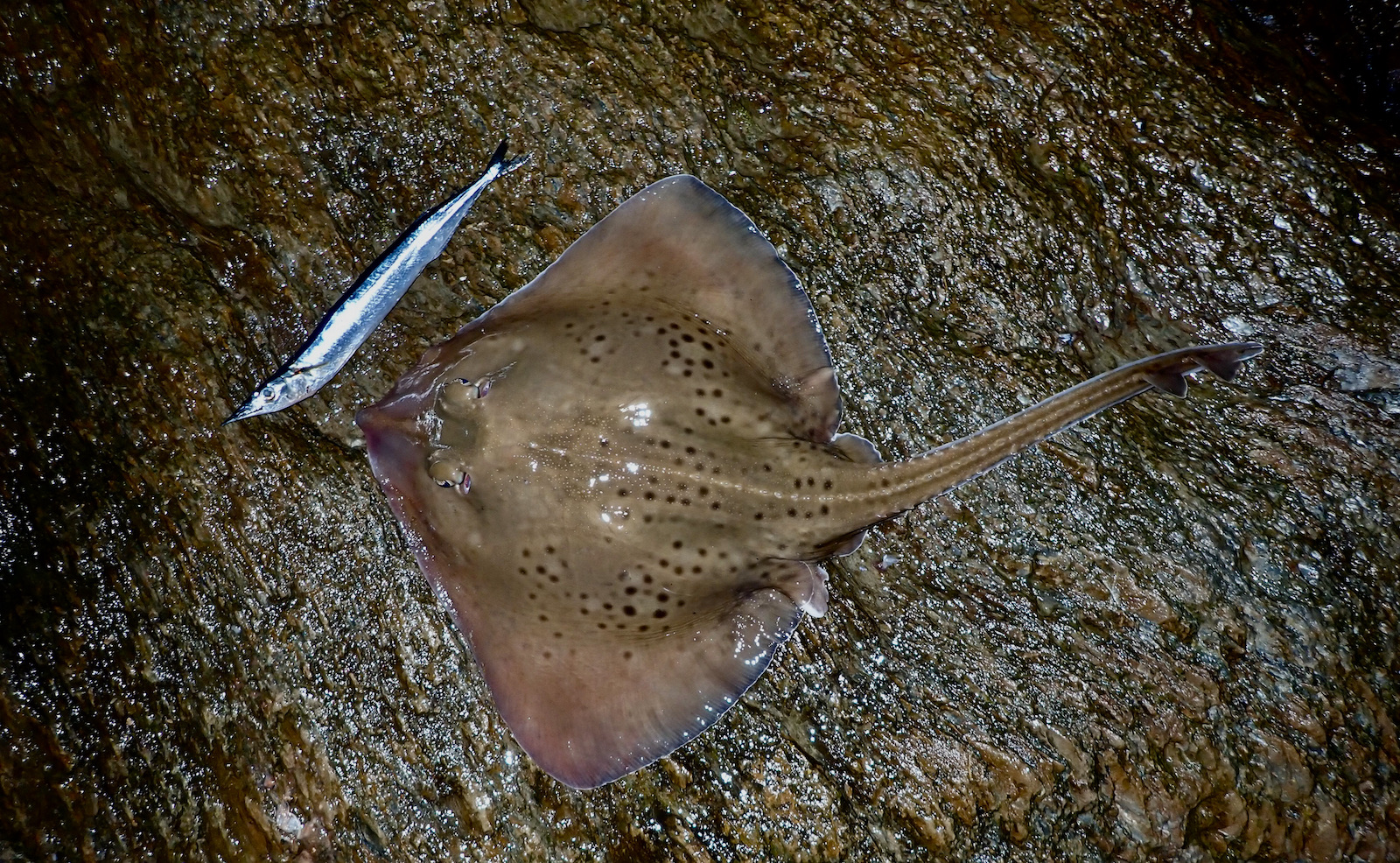

December mullet were once rare yet mullet fishing now seems well worth the effort throughout the entire year.


I Joined South Molton Angling Club for their Christmas get together at Blakewell Fishery where members hoped to win the Mac McCarthy Trophy for the biggest trout caught this season. The biggest trout up until this date was fine rainbow of 5lb 6oz from Wimbleball.
The morning was incredibly mild for mid December with an overcast sky that occasionally allowed glimpses of bright winter sun. I was hoping to once again slip into the bay where the trout had been shoaling the previous week. I joined club Chairman Ed Rands in the favoured spot and began working the bay with a damsel nymph.


Within an hour both Ed and I had secured five fish limit bags of quality fish with my five totalling just over 20lb and Eds around 15lb. We both chatted with Matt Kingdon who moved into the bay and continued to tempt the trout that had by now wised up a little. Strangely it seemed that the trout wanted a virtually static fly often taking the small black lure Matt was using as it sank through the water. It was fascinating to watch as Matt watched the end of the line twitch setting the hook with a quick strip of the line.




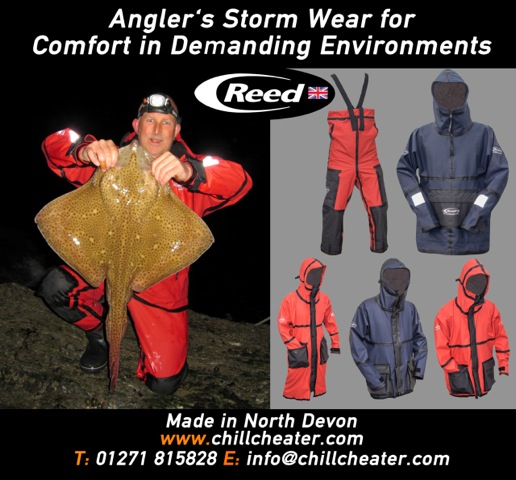




Blakewell Fisheries Christmas competition was held as a lower key affair this year in part due to high COVID rates in the area with only a small number of local anglers invited. Sunday morning dawned cold and showery as the draw for pegs was made along with a glass of port and a cup of tea.
The competitors drew lots at the start of the match with the intention of rotating around every hour. With the water cold and clear it was surprising that trout proved hard to tempt at first with several anglers struggling to get any takes at the start of the competition.

As the morning progressed it soon became apparent that the trout were tightly shoaled in the bay with any angler fishing there enjoying consistent takes. I was fortunate to draw this peg just before dinner and quickly added a brace of trout to the single trout I had tempted on my second peg. The best fish close to 4lb. The first two trout falling to a bead headed cats whisker the third to an orange blob!


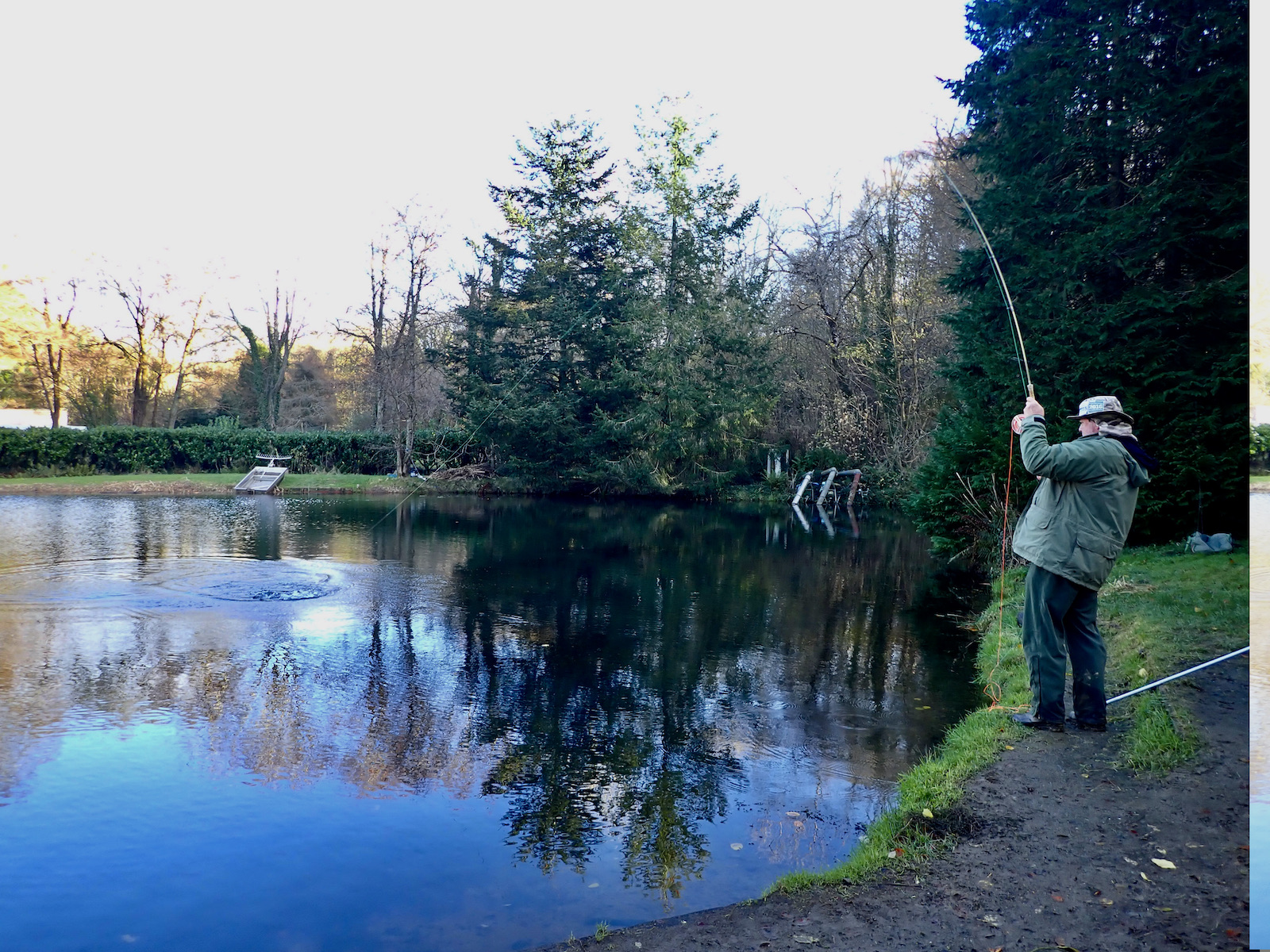



A hot pasty dinner and cool beer enabled anglers to exchange opinions and tales around the venues large outdoor dining table.
After dinner the rotating pegs format was to a large extent ignored as the bay again fished well. I moved to the corner of this bay away from the other anglers and flicked a bead head PTN out on a short line. After fifteen minutes my bag limit of five fish was completed. By now the trout were wising up as lures seemed to lose their pulling power.
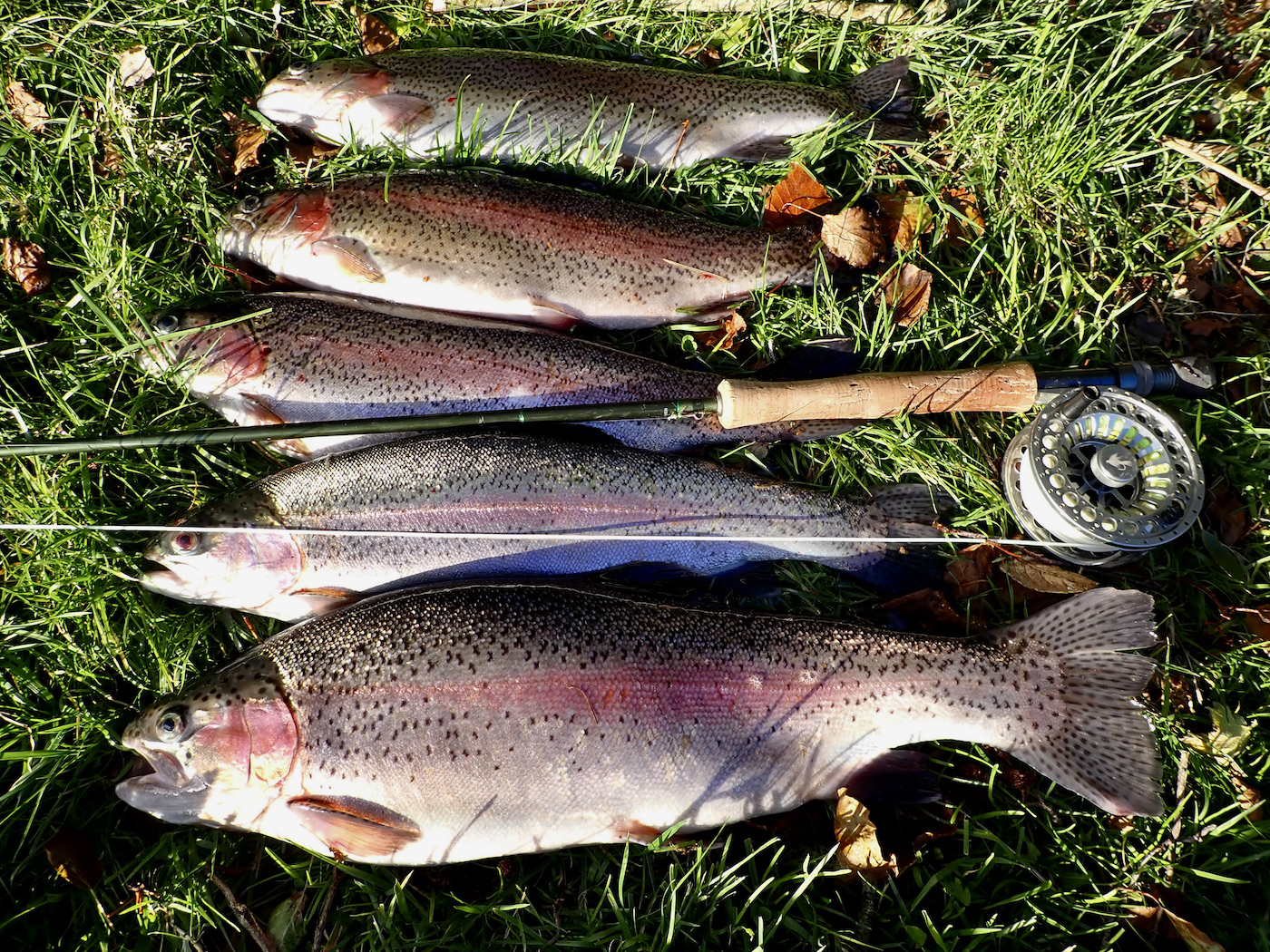
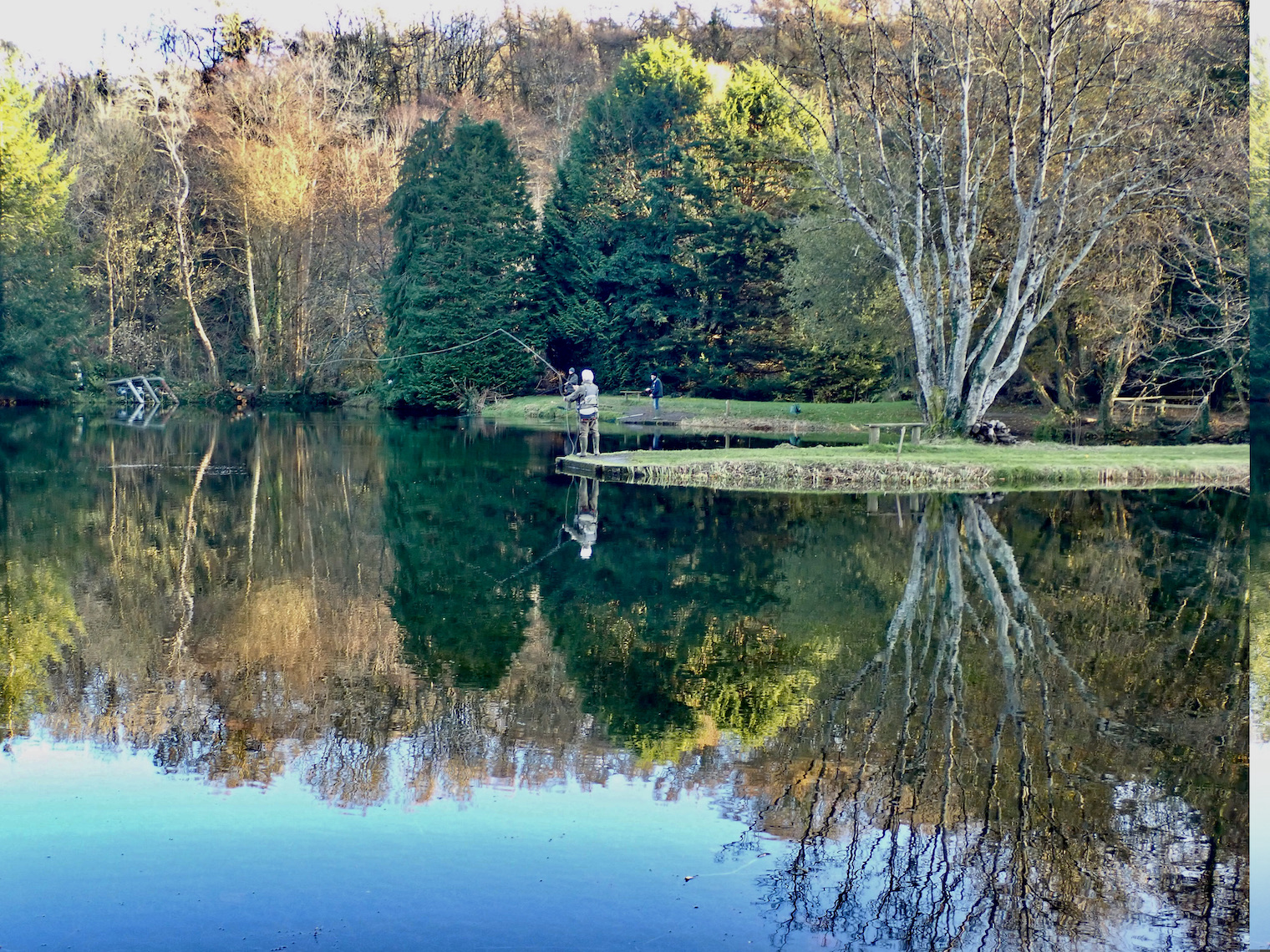
As the afternoon grew colder competitors gathered for the weigh in with a hot cup of tea. Over half the competitors had managed to take limit bags with several rainbows topping 4lb.
1st – James Burdus – 5 for 16lb 13oz
2nd – Paul Grisley – 5 – for 15lb 15oz
3rd – Dave Winter- 5-for 15lb 8oz
4th Wayne Thomas – 5 – for 12lb 5oz

Many thanks to hosts Richard and John Nickell for holding the event.
Richard told of the impact of changing climate on the trout fishery with warmer temperatures resulting in extensive weed growth throughout the year. The traditional season on small still-water trout fisheries has certainly changed across the country with the best of the fishing now starting in late October through until early summer. Increasing numbers of trout fisheries now close during July, August and September. Extensive farming could also be impacting with run off from fields helping to promote weed growth.
Blakewell is open for the rest of 2021 with a short break over the Christmas holiday. The lake will close for most of January when the lake will be drained to allow treatment of the weed growth. It will reopen rejuvenated in February with excellent prospects for late winter, spring and early summer.